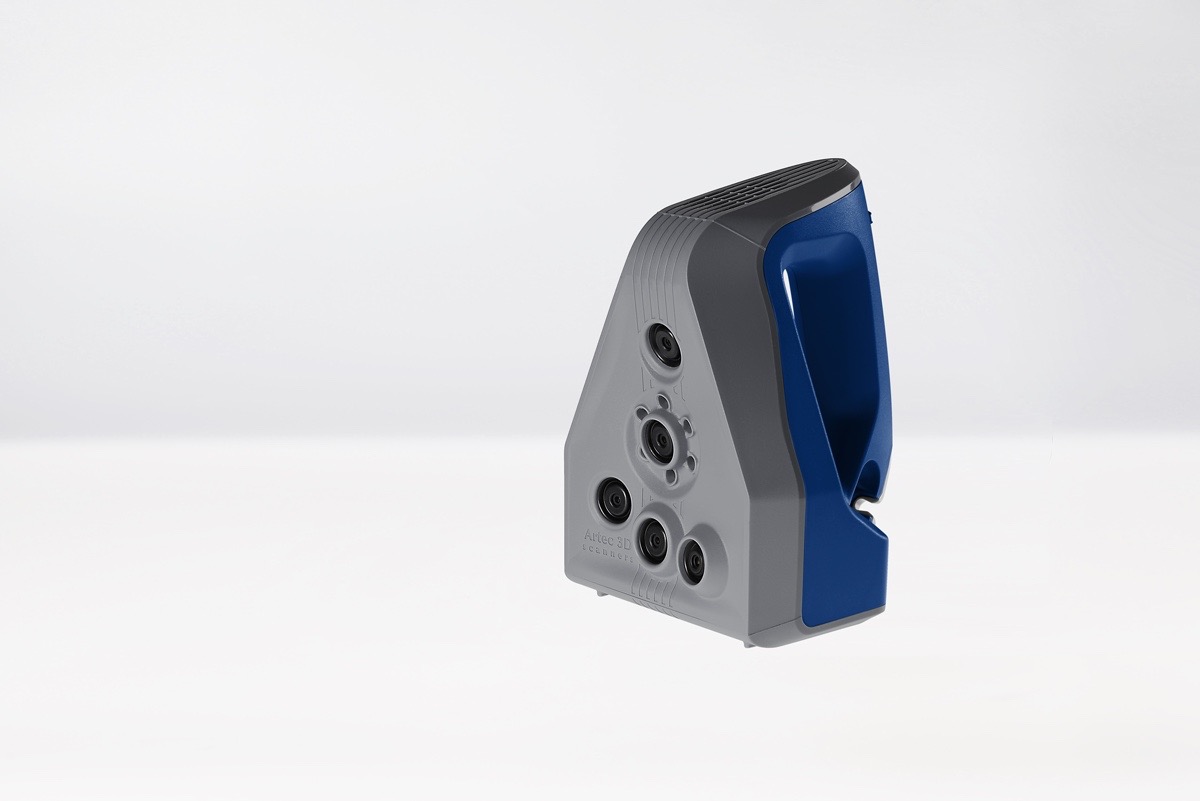New 'Space Spider' 3D Scanner Could Work in Space

The company behind a new 3D scanner says the device would make a good addition to the International Space Station.
The "Space Spider" handheld 3D scanner can work in microgravity and features an advanced cooling system that prevents overheating — a common issue for electronics in space, said representatives of Luxembourg-based Artec 3D, which developed the machine.
"Imagine the potential of using 3D scanning technology on the International Space Station paired with a 3D printer," Artec 3D president and CEO Artyom Yuhkin said in a statement Wednesday (April 29). "The Space Spider boasts an enhanced cooling system that allows the user to capture accurate 3D data more rapidly. This handheld scanner can endure some of the most difficult situations on Earth and has been engineered to perform in nearly zero-gravity environments when called upon."
The space station already has a 3D printer. The machine, which was built for NASA by California-based startup Made in Space, launched to the orbiting lab last September and was installed in November. It has already printed out a series of test parts, which came back down to Earth in February aboard SpaceX's robotic Dragon cargo capsule.
NASA engineers are currently comparing the space-printed parts to identical objects the machine manufactured before it left Earth.
The orbiting lab's machine is part of a project designed to demonstrate that 3D printing — in which objects are built layer by layer out of plastic, polymers, metal or other "feedstock" materials — can work away from planet Earth.
NASA has high hopes for 3D printing technology, which agency officials have said could make voyaging spacecraft and off-Earth settlements more self-sufficient and cut the cost of spaceflight substantially, by reducing the need for resupply missions and carry-along spare parts.
Breaking space news, the latest updates on rocket launches, skywatching events and more!
The Space Spider scanner can capture objects with an accuracy of up to 50 microns and a resolution of up to 100 microns, Artec 3D representatives said. The device retails for $27,600.
Follow Mike Wall on Twitter @michaeldwall and Google+. Follow us @Spacedotcom, Facebook or Google+. Originally published on Space.com.

Michael Wall is a Senior Space Writer with Space.com and joined the team in 2010. He primarily covers exoplanets, spaceflight and military space, but has been known to dabble in the space art beat. His book about the search for alien life, "Out There," was published on Nov. 13, 2018. Before becoming a science writer, Michael worked as a herpetologist and wildlife biologist. He has a Ph.D. in evolutionary biology from the University of Sydney, Australia, a bachelor's degree from the University of Arizona, and a graduate certificate in science writing from the University of California, Santa Cruz. To find out what his latest project is, you can follow Michael on Twitter.
